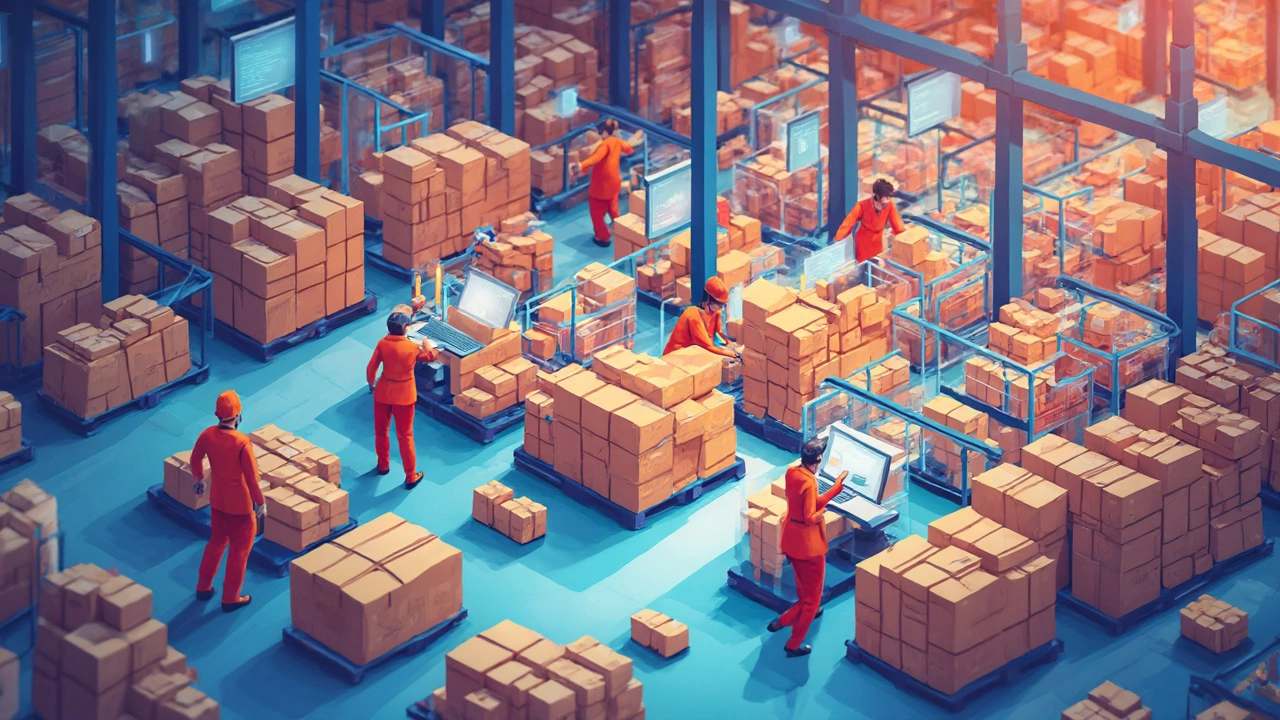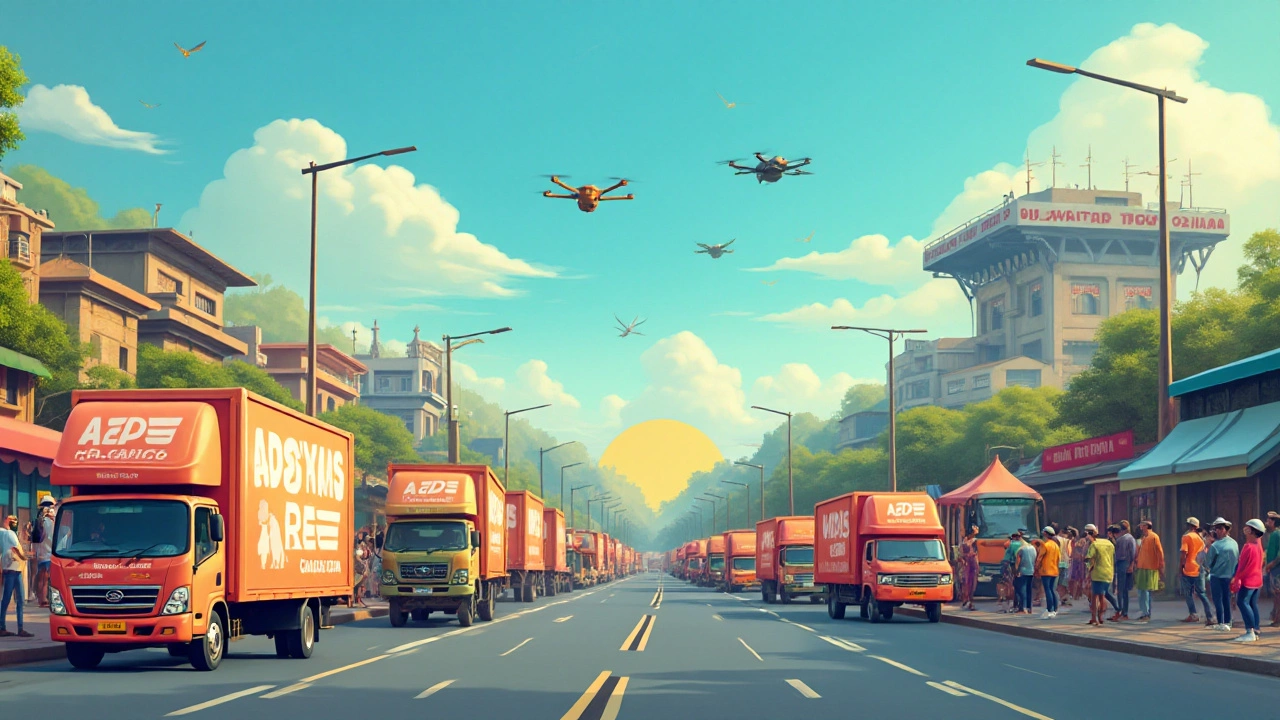Online Shopping Made Easy: Delivery, Returns, and Logistics Hacks
Did you know the average shopper makes three online purchases a week? That means you’re juggling delivery dates, return policies, and shipping costs more often than you think. Getting a grip on the logistics behind each order can turn a stressful checkout into a smooth experience.
First thing’s first – the speed you choose matters. Fast shipping feels great, but it can also eat into your budget if you don’t know the options. Most retailers offer standard, two‑day, and same‑day services, each with its own cut‑off time. Knowing when a cart closes for next‑day delivery can save you from a missed deadline and a delayed package.
Pick the Right Delivery Speed for Your Needs
Ask yourself: How urgently do you need the item? If it’s a birthday gift or a work‑essential, upgrade to two‑day or even same‑day if the retailer covers the cost. Otherwise, stick with standard shipping – it’s usually the cheapest and still reliable.
Check the retailer’s cut‑off clock. Many sites stop accepting next‑day orders at 2 pm local time. Some even show a live timer, so you can see exactly how much time you have before the window closes. Setting a reminder on your phone can prevent last‑minute scrambles.
Look for free‑shipping thresholds. If your cart is close to the minimum amount for free delivery, add a small, low‑cost item to qualify. This trick drops the shipping fee without compromising what you actually need.
Master Returns and Track Your Packages
Tracking is your best friend. Most carriers send a link once the package ships, and a simple tap shows you where it is in real time. If the status stalls, a quick call to customer service can often give you a clearer picture.
When it comes to returns, read the policy before you click ‘buy’. Note whether the retailer offers a prepaid return label or if you’ll have to pay postage. Some sites let you start a return from the order page, which speeds up the whole process.
To avoid extra hassle, keep the original packaging. Boxes, bubble wrap, and labels make it easier for the carrier to handle the return and for the retailer to restock the item.
If you shop from multiple stores, consider using a single logistics partner that aggregates your orders. Services like StockOne Logistics can consolidate shipments, offer consistent tracking, and handle returns in one place, cutting down on confusion.
Finally, don’t ignore the power of reviews. Others often share real‑world delivery experiences – like how long a “free standard” option actually takes in your city. Those tips can help you pick the most reliable service for your next purchase.
By understanding delivery speeds, cut‑off times, and return policies, you’ll save money, avoid missed deadlines, and keep your online shopping stress‑free. Happy buying!
What Does E‑Commerce Mean? A Clear Definition and Practical Guide
A straightforward explanation of e‑commerce, covering its definition, core components, major models, benefits, challenges, launch steps, and future trends.
Read MoreE-Commerce Giant Amazon: The King of Online Shopping and Logistics
Amazon stands out as the most popular example of e-commerce, leading the pack not just with its massive product catalog but also with advanced logistics. This article explores why Amazon dominates the online marketplace, how its logistics work, and what makes its delivery system a benchmark for others. You’ll find insider facts about their supply chain and practical tips for sellers wanting to keep up. The article also covers why this matters for businesses and shoppers alike.
Read MoreE-commerce Explained: What It Is and Real-World Examples in Logistics
E-commerce means buying and selling goods or services online, but it's much more than clicking 'add to cart.' This article breaks down what e-commerce really is and how logistics makes the whole thing work. You'll see actual examples of e-commerce in action, plus smart tips for handling shipping and fulfillment. It's all about understanding how online orders get from web stores to your door. If you’re curious about how digital shopping works behind the scenes, you’ll get answers here.
Read MoreWhat is Logistics in Commerce?
Logistics in commerce isn’t just about moving things from one point to another; it’s the backbone of e-commerce. It involves managing resources, planning deliveries, and ensuring products reach customers efficiently. For businesses, understanding logistics means better customer satisfaction and operational success. From warehousing to last-mile delivery, each step is crucial in ensuring a seamless shopping experience.
Read MoreHow E-Logistics Revolutionized E-Commerce
Discover how e-logistics has transformed e-commerce by enhancing supply chain efficiency, improving customer experience, and reducing operational costs. Learn about its key components, including order management, inventory tracking, and last-mile delivery. Explore the technologies and strategies driving the growth of e-logistics, such as AI, IoT, and blockchain. Understand the challenges faced by e-commerce businesses in optimizing logistics. Gain insights into the future trends shaping the industry.
Read MoreUnderstanding the Differences: E-Commerce vs. Online Shopping
E-commerce and online shopping are often used interchangeably, yet they represent distinct concepts in the digital retail landscape. While online shopping refers to the act of purchasing goods or services via the internet, e-commerce encompasses a broader scope including online shopping and additional business activities. Understanding their differences can enhance your online business strategy, from managing logistics to marketing tactics. This article dives deep into these differences, offering insights and tips for navigating the digital marketplace.
Read MoreUnderstanding E-Commerce Logistics: How Online Shopping Really Works
E-commerce logistics is the backbone of modern online shopping, ensuring the seamless delivery of products from sellers to consumers. This article explores how e-commerce logistics works, highlighting the key processes involved, from order placement to final delivery. It delves into the advantages and challenges of e-commerce logistics and provides tips for optimizing supply chains. By understanding these elements, businesses and consumers can gain insights into enhancing their online shopping experience.
Read MoreUnderstanding E-commerce and Its Role in Modern Supply Chains
E-commerce has revolutionized supply chains by introducing new efficiencies and challenges. Understanding its role includes examining how goods move from warehouses to consumers, the impact on traditional logistics, and the use of technology. This article explores the transformation of supply chains through the lens of digital commerce, offering insights into efficient delivery systems and consumer behavior trends.
Read More






